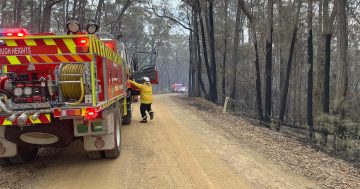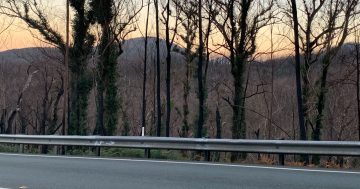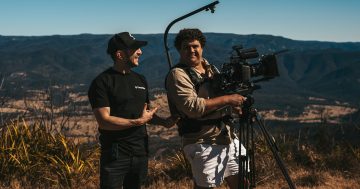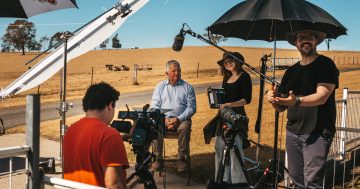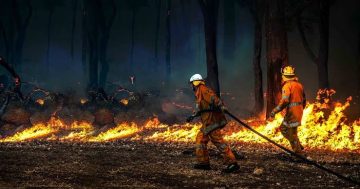
The scars of the past summer’s bushfires are still clear to see on Clyde Mountain. Photo: Kim Treasure.
When bushfire tore through Mogo, Lorena Granados from Roman Leathergoods lost everything – her house and business were burnt to the ground.
Three weeks later, she had a makeshift market in front of the ashes as she tried to make the best of the recovery effort, only for it to be shut down because of COVID-19 a fortnight later.
A new research project is seeking to learn from the experiences of South Coast residents to help the NSW Rural Fire Service (RFS) continue to improve community bushfire safety, and Lorena hopes the lessons from the past summer are not forgotten.
“I think it is extremely important that we learn from this experience and to implement things that would make a difference because I feel like we are going to go through something such as this again after the year that we have had,” she says.
“What really surprised me was that our government did not have a response team or response plan in place for natural disasters in our own country.
“We did not even have water here and we are in a first-world country. They did not come here until 10 days after – we had no electricity, no water, no food, we did not even have Panadol, we had nothing.”
Conducted by the Bushfire & Natural Hazards Cooperative Research Centre and the University of Wollongong, researchers want to hear directly from residents and visitors to the area about their fire preparedness and response to the bushfires across NSW in 2019-2020.
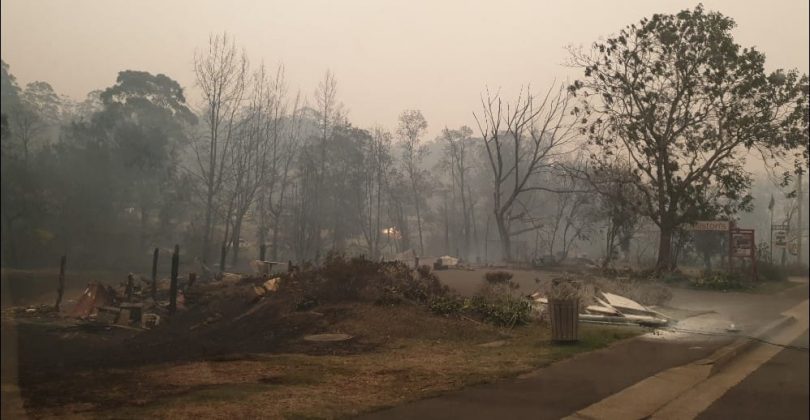
Roman Leathergoods in Mogo was completed razed during the Black Summer bushfires. Photo: Facebook.
Lead researcher Dr Josh Whittaker says the views of anyone who was affected by the bushfires are important.
“Your experience is unique and can help make a difference during future bushfires,” he says. “We would like to better understand bushfire risk and awareness, actions you may have taken to plan and prepare, and how you responded to warnings and the bushfires, whether you were directly or indirectly affected.
“It is important to hear from residents as well tourists, visitors or those who might have been at their holiday home.”
Angela Hunter from Dog Leg Farm in Bombay, about 15km west of Braidwood, admits that a sense of complacency added to the community’s vulnerability during the summer.
“I think we were all unprepared,” she says. “Even though it had been a long, hot summer and we could see it was so dry, we all had that complacency like, ‘Oh, it will be fine, we will be fine,’ and it took everyone by surprise. But definitely the government was unprepared.
“Had they had water bombers on the North Black Range fire straight away, I think they could have put it out.
“Everything we do now, we have fire in mind. It is at the forefront [of our minds]. We are already talking about putting deciduous trees as fire breaks around the house because there was evidence that local deciduous trees stopped the fire in its tracks in some places.”
Dealing with the NSW Government during the recovery process was also particularly cumbersome, says Angela.
“It really was an awfully painful process,” she says. “We felt like the government left us out on a bit of a limb and there has not been much interest from them.

Angela Hunter lost her home at Dog Leg Farm during the past summer’s bushfires. Photo: Angela Hunter.
“They initially denied the grant for us and we had to appeal it. The government grants were a nightmare. I had to list every item we had lost; I had to go down to Batemans Bay and queue up with people; they wanted my bank statement and they pored over every statement asking, ‘What was this $35 for? Where did this $100 come from?’ It was just crazy.”
Due to COVID-19, interviews will be conducted via phone or web conferencing, and take between 45 minutes to an hour to complete. Researchers are available after hours and on weekends throughout August. You can register your interest here.
As well as the South Coast, this research is being undertaken in communities right across NSW, including the Snowy Monaro, Snowy Valleys, Southern Highlands and Wollondilly.
NSW Rural Fire Service director of communications and engagement Anthony Clark says the results of the research will be used to inform community engagement strategies.
This research builds on a similar study which was undertaken following the 2018 Reedy Swamp fire.







